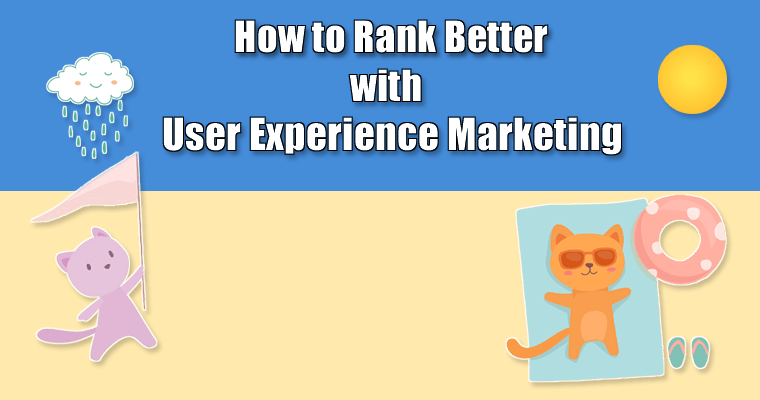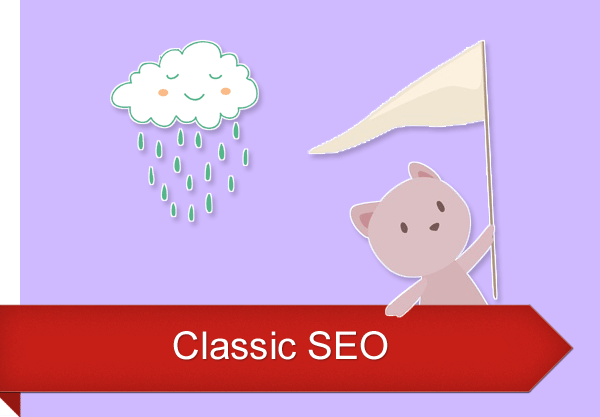
Search engines no longer depend on matching keywords on web pages. The most recent changes involve a move toward understanding concepts. Thus, SEO strategies that begin with keyword research are ranking strategies for algorithms that no longer exist.
This article will show how far away from keywords search engines have gone and how that has impacted longstanding SEO practices. I will then show how User Experience Marketing fits into a more realistic SEO strategy that adapts to modern search engine algorithms.
No Strings Attached
In 2012, Google announced a move away from strings and toward understanding things was at the heart of the Knowledge Graph. The Knowledge Graph itself was intended to improve the “next generation” of search.
That next generation of search was introduced in 2013 with the Hummingbird update. Consequently, top ranked websites don’t always feature the keywords used to find them. If keywords matter less and concepts matter more, this must certainly impact how we do on-page SEO.
The question nobody is asking is this: If Google has moved away from matching search queries to keywords on a web page, why do we continue to worry about keywords on web pages?
And most importantly, how does one optimize a site for a search engine that is examining more than just keywords? But there is always more. Google is also using user experience-type metrics to judge websites.
Things couldn’t be more fun, right?
Are Keyword-Based Strategies Obsolete?
You can argue that “classic” SEO is becoming obsolete. What’s not debatable is Google has shifted the metrics of ranking away from simple text relevance to ranking metrics related to knowledge, plus search query rewriting in order to give the most accurate result, regardless if the search keywords are on the web page. Rather than matching keywords to keywords, Google is understanding words in terms of people, places, and things.
How Search Engines Can go Beyond Keywords
Worthy of consideration is information retrieval research that shows how to present search results that do not feature the keyword phrases on the web page. The way it does this is through a process called query reformulation(PDF research paper). This is how query reformulation works: Search queries sometimes can be vague or contain too many meanings.
With query reformulation, a search engine can refine the original search query in order to interpret it better, in order to expand its search for the best web page by including more sites than the initial group that contains all the keyword phrases in a search query. The research paper uses the example search query “becoming a doctor” as being vague and suggests reformulating it as “becoming an oral surgeon” may produce more successful results.
Words Have Multiple Meanings
It’s common for words to have multiple meanings. For that reason, Google uses geographic signals, previous search signals, and statistical signals in order to identify the most popular reasons users search for a phrase and then display results based on that research. This is often referred to as identifying user intent. But in plain English what this is really about is recognizing search queries can be too vague or completely off the mark. To compensate for this, search engines understand a particular query can be answered by a similar and better composed query. The classic example is, what does a search user mean when they type the word, Jaguar? Do they mean the car, the football team or the animal? This is what underlies Google’s focus on user intent, which is part of what Google announced in an official blog post in 2012, a move away from strings (simple keyword pattern matching) and pressing forward to understanding things.
This, too, is another way Google has stepped away from simple keyword matching. It forces site publishers to think about why site visitors are using specific keywords, their intent, and then craft the content to fit that user experience.

Beyond the Knowledge Graph
This focus away from strings goes beyond the Knowledge Graph. The official Google blog post noted this was leading toward a different kind of search engine:
“This is a critical first step towards building the next generation of search, which taps into the collective intelligence of the web and understands the world a bit more like people do.”
Considering many of the sites in the Google search results no longer feature all the keywords used in the search query, is it possible that keyword based search has already been replaced?
And if that’s true, is it possible that ‘classic’ SEO, the strategy based on building websites around keyword research, should also be modified or even replaced?
Crafting Content Around the User Experience
Publishers who build sites around keywords face an uphill struggle obtaining links, and since links remain an important ranking factor it makes sense that the SEO strategy works together with obtaining links. And this is where user experience marketing shines. Nobody links to a keyword based site because they feel good about it. Keyword based sites feel sterile because they are optimized for keywords, not people. Which tends to make it more difficult to promote. Pages built around the user experience generate enthusiasm, which in turn encourages sharing.
Users Share Experiences, Not Links
Perhaps the best kind of link is the kind created because of a positive experience (learning, utility, usefulness, fun). Scientific research has discovered that experiences motivate sharing, and positive experiences are shared the most. Those aren’t links users are sharing. Users share experiences. Hyperlinks are the sharing of an experience. It is experiences (not keywords) publishers must focus on in order to cultivate links and recommendations that will in turn power better ranking.
How to Cultivate Experiences
The most enthusiastic links are recommendations. There is a certain amount of emotion invested in recommending a site. The inspirations for emotional investment are generally rooted in usefulness. Popularly linked sites helps users accomplish things such as make them feel like the person they aspire to be (wealthy, smart, fashionable, expert, etc.). Those are the motivations behind a site visitor attaching themselves to your brand, and that kind of link will turn into a better ranking.
In my experiences evaluating why a web page won’t perform well, the leading reason is because the web page was created around keyword phrases instead of focusing on what problem the page is solving for a specific kind of site visitor. The problem being solved is what should guide the publisher as to the words used in the title tag and the page heading. Building a web page in this manner makes it easier to outreach and build links, which in turn will make it easier to rank.
In an interview with Peachpit Press, branding expert Marty Neumeier, author of The Brand Flip advises this:
“…customers are not focused on products, but meaning. They choose products to build their identities. The question they ask is: If I select this product, what does that make me? Customers no longer buy brands. They join brands.”
Devoting time to the user experience is not pie-in-the-sky. It is a pragmatic approach because imbuing site visitors with a feeling of ownership and emotional resonance is a sure way to encourage more sales, more links, and more traffic. And that’s why we optimize, right? To make more money.
User Experience is Important to Google
It is abundantly clear that Google cares about the user experience on the sites it ranks. In 2012, Google released the Page Layout Algorithm. This algorithm checks if there are too many ads and if the content can be easily found. This algorithm was created to explicitly deal with the user experience issue. Here is what the official announcement said:
“ …we’ve heard complaints from users that if they click on a result and it’s difficult to find the actual content, they aren’t happy with the experience. …If you click on a website and the part of the website you see first either doesn’t have a lot of visible content above-the-fold or dedicates a large fraction of the site’s initial screen real estate to ads, that’s not a very good user experience. Such sites may not rank as highly going forward.”
Google Experiences Your Pages
It used to be Google was only interested in your text. Not anymore. Google requires publishers to give them access to their CSS and JS files so they can render your site the same way a user does. That’s an examination of the user experience. Part of it is to identify mobile friendly sites and part of it is to look for spammers. But other things, such as excessive ads above the fold and interstitials that cover over content are explicitly about user experience.
Is There a User Experience Algorithm?
Search engine algorithms have increasingly leaned on user experience metrics to evaluate user satisfaction. The most obvious example of Google’s preference for sites with a good user experience was the 2012 rollout of the Page Layout Algorithm. The most recent instance of Google’s preference for sites with a good user experience was updating its mobile algorithm to prefer mobile friendly sites (April 2015) and most recently this news, Google to Penalize Sites That Prompt You to Download Their App. Here is an excerpt from Google’s Webmaster Central announcement of the update to the Page Layout Algorithm:
“If you click on a website and the part of the website you see first either doesn’t have a lot of visible content above-the-fold or dedicates a large fraction of the site’s initial screen real estate to ads, that’s not a very good user experience. Such sites may not rank as highly going forward.”
There are no signs of an actual user experience algorithm. However, there is evidence that the user experience of a site visitor may play a role in testing the success of scaled algorithms. While user experience metrics may not directly affect your rankings, showing search results likely to lead to good user experiences are baked into the algorithms.

User experience marketing for top ranks
Whether or not you believe building sites around keyword phrases has lost a degree of importance in today’s search algorithms, I think we can still agree delivering a good user experience is useful. I asked Katy Katz, Content Director at Inturact, about her approach to content and she offered,
“Positive user experience boils down to whether the website fulfills the need that the consumer was searching for in the first place.”
I couldn’t agree more. Regardless of whether the content is in the context of a B2B or B2C e-commerce, if one steps back and honestly asks what problem the content is solving, many opportunities for improving the performance of that content will present itself. Sometimes the answer will be the content is not solving a problem. In that case, take time to think of the problem you want to solve and reposition the content so it addresses the problem.
Here are some general tactics for achieving better user experience metrics.
Outreach Campaign Feedback
I have been practicing and refining the art of promotional outreach in one form or another since 1999. An important lesson I’ve learned is feedback is critical to improving your site and the promotion of it. There are two kinds of feedback: implicit and explicit. Implicit feedback is a quiet no, the negative non-response. That means your outreach was unsuccessful for unknown reasons.
Believe it or not, this is good feedback. The problem could be your outreach or the content. Explicit feedback is when someone takes the time to tell you why your outreach failed. This is gold because now you can identify whether the problem was the outreach or the content. Here are three examples of the kinds of content related feedback I find useful:
- The content was too commercial
This means the content lacked utility, a useful quality. Solving this problem involves rewriting the page so it has more utility. - What’s in it for me?
Content, even product pages or about pages, should be written from the perspective of answering the site visitor’s question: What’s in it for me?
– What’s in it for me? We make it easy to reorganize your company, identify where to save money, and increase productivity
– What’s in it for me? Your children will love this furniture and they will be safe from harmful chemicals
-What’s in it for me? This food is healthy and a portion of the profits supports your favorite charity - The content lacked tribal queues
Sometimes people look for what I call Tribal Affinity. People tend to think of themselves as belonging to a group and they tend to trust fellow members of that group. My concept of Tribal Affinity is a technique where you leave visual queues on a web page that subtly signals your membership in that tribe. Thus, if you are outreaching to industry professionals, a badge indicating membership in an association, advocacy group, or participation in a related charity is a subtle signal that you belong to the same tribe and share Tribal Affinity. Tribal Affinity is a critical aspect of the user experience. It signals you and the site visitor belong together, that you are trusted and authoritative.
Dwell Time
Keeping site visitors on your site long enough to perform the desired action (clicking a link, buying a product, becoming a lead, etc.) is critical. Site visitors who immediately click back to the search engines are an “implicit signal” to the search engines that your site did not deliver. While this might not directly affect your rankings in the short-term, in the long-term it is possible if this is happening enough times across the web that an algorithm update may identify the problem and negatively affect your rankings.
Remember, CTR is not a ranking factor; CTR is used as a quality control metric to judge the success of an algorithm. Thus, if you identify a problem with dwell time then it will benefit you to identify what is affecting the user experience, to conduct your own quality control. Apart from search traffic, it’s simply a good practice and a no-brainer to keep visitors on your site long enough to perform the action you want them to make.
How to Keep Visitors on Your Site Longer
- Don’t burden or chase away the site visitor with too many ads
- Make your content easily viewable from the top of the fold
- Make your content easy to scan
- Offer related articles at key points where visitors tend to become disinterested
- Encourage messaging opt-ins
Post-Transaction Experience
Successful entrepreneur Justin Sanger pointed out that everyone knows about the sales funnel but less well-known is the funnel that opens up after the sale. He calls this upside down funnel the Post-Transaction Funnel. The post-transaction funnel represents all the things you can do to send the signal back to the search engines that the site visitors had a good experience at your website. This activity includes:
- Encouraging social sharing
- Cultivating good reviews
- Encouraging word of mouth referrals
- Cultivating relationships with non-competitors in your space
I believe it is a good practice to consider the post-transaction funnel because those are the kinds of activities that tend to cultivate more sales. Post-transaction marketing is something to consider outside of the Classic SEO box.
Joining Your Experience
Not every site can host a community and there are serious caveats for hosting a community, such as controlling the quality of the user-generated content (UGC) and the initial investment of time moderating the community to cultivate a positive troll-free atmosphere. But what are the alternatives, Twitter and Facebook? Those platforms are someone else’s brand, they provide no recourse against trolls, and there is little to zero control over how your brand is portrayed.
If the goal is to foster good experiences, hosting your own community may be the appropriate solution. It works for sites like TripAdvisor, Amazon, Walmart, and Cabela’s. All those sites are useful because they have a strong community providing shopping research support. Community builds loyalty and transforms the site from merely a place to shop to a destination for discovery and learning. And this goes back to what branding expert Marty Neumeier said, “Customers no longer buy brands. They join brands.”
User Experience Marketing
It is important to recognize the foundation of a successful website is the user experience. Even a successful PPC landing page is founded on the principle of a quality end-to-end user experience, from the layout, ease of data delivery to convenience. User experience marketing is about moving beyond simple keyword phrases and integrating a content strategy that involves understanding what a page means to the user — because that is how the search engines are increasingly understanding and ranking web pages. When evaluating a page in the context of user experience, good questions to ask are:
- What user intent is the content satisfying?
- What task or goal is the content helping the site visitor accomplish?
While relevance is still king, User Experience has become an increasingly important component of which pages are shown in the search results. Add to this the important role it plays in cultivating traffic independent of search, and the importance of a user-experience based foundation is clear.
[“source-searchenginejournal”]


